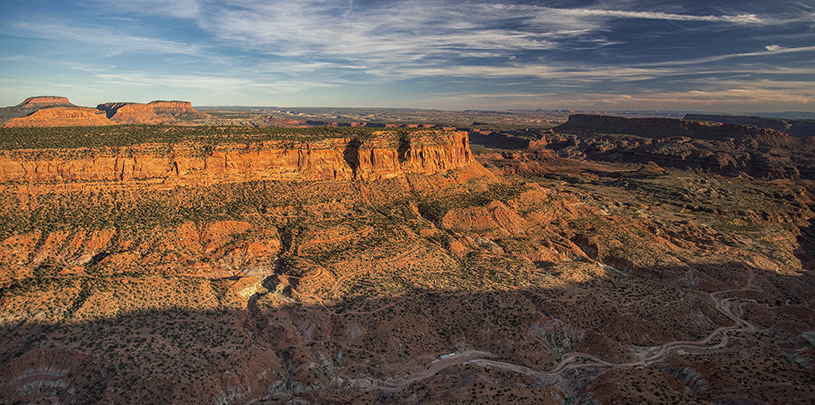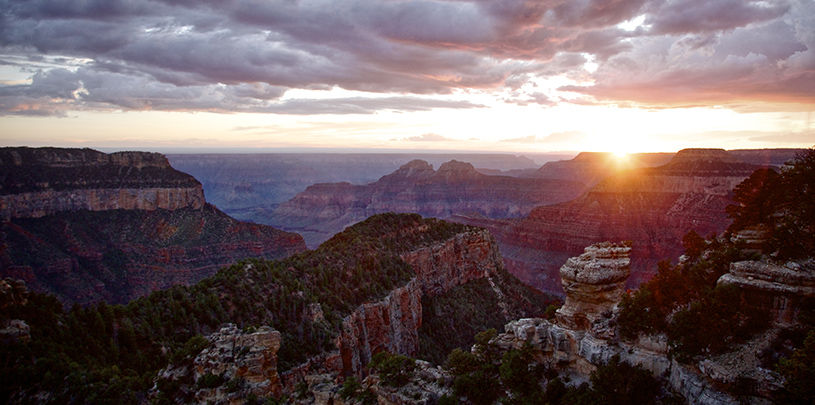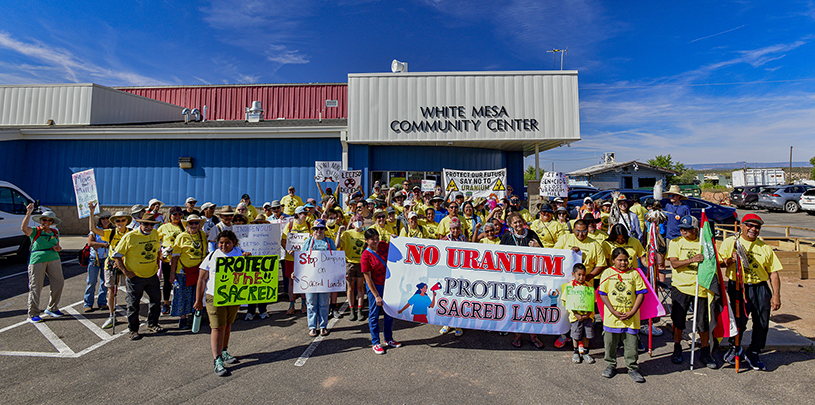
Today, in Washington D.C., Congress is mulling over legislation that would establish a permanent mining ban for public lands around the Grand Canyon. At the same time, the Trump administration has recommended at least one massive subsidy to artificially prop up the uranium industry so that companies who cannot turn a profit mining uranium can mine the U.S. Treasury instead. And here in Arizona, one of those companies, Energy Fuels Resources, holds open a festering wound in the form of a flooding uranium mine, called Canyon Mine, which sits less than 10 miles from the south rim of the Grand Canyon. Where the company sees hope for taxpayer subsidies, the Havasupai Tribe and other northern Arizona community members see the potential for disaster.
Mine flooding increases in volume and toxicity
Canyon Mine wasn’t supposed to take on water. At least that’s what the mine’s owners told Arizona regulators when they were trying to open the mine back in the 1980s. Despite the company’s denial, a significant amount of water has been flooding the mineshaft since 2016 when the mineshaft surpassed a depth of 450 feet. And the flooding has only gotten worse. A recent set of records we requested shows that in 2019, 10.7 million gallons of water had to be removed from the mineshaft. Compare that to the 9.7 million gallons in 2018, and 8.8 million gallons in 2017.
It appears we have a problem — a rapidly growing problem.
Why does it matter if the mine floods?
Water in a uranium mine is dangerous. Exposure of uranium ore to oxygen makes otherwise stabilized uranium very soluble in water. In 2019, uranium levels in the mineshaft water reached over four times the Environmental Protection Agency’s (EPA) safe drinking water standard, an increase from 2018 levels. Unfortunately, uranium isn’t the only toxin in the water flooding the mine. Arsenic is also mineralized near the orebody, and, in 2019, it dissolved in the mineshaft’s floodwater at levels 28 times the EPA’s safe drinking water standard, another increase since 2018.
Once water is contaminated, it becomes a never-ending battle against Mother Nature to ensure that it doesn’t find its way through any pathways — either natural (like permeable or fractured rock) or manmade (like wells or boreholes) — to groundwater aquifers, seeps, or springs that flow into the Grand Canyon and supply drinking water to communities like Supai Village, home of the Havasupai people. And perhaps worst of all, any man-made plug of this flooding will eventually fail, so the threat and need for careful monitoring will exist long after the mine is closed and “cleaned up.” The best thing we can do now is avoid exposing more ore and stop making the problem worse.
Groundwater permit renewal still in limbo
As increasing amounts of water flood the mineshaft, Canyon Mine grows as an ongoing threat to the Grand Canyon, the Havasupai people who live within its walls, and visitors from around the world. Meanwhile, the Arizona Department of Environmental Quality (ADEQ) still has not announced whether or not it will renew the mine’s aquifer protection permit, which expired in 2019 and is required for mines since they can discharge harmful substances like dissolved uranium into the groundwater. Because of ample flooding in the mineshaft and the irreversible damage that could happen if water sources become contaminated, the Trust and several partners submitted a letter to ADEQ asking for the mine to be issued a different category of aquifer protection permit, which includes requirements like groundwater monitoring and more frequent reporting (under the expired general permit, water management and water quality testing are only voluntary “requirements”).
In the medical field, a wound would be cleaned up and stitched to prevent a gash from becoming a fatal infection. But at Canyon Mine, the mining company continues to let the wound fester, no matter the costs, while waiting for the Trump administration to hand over taxpayer dollars.





